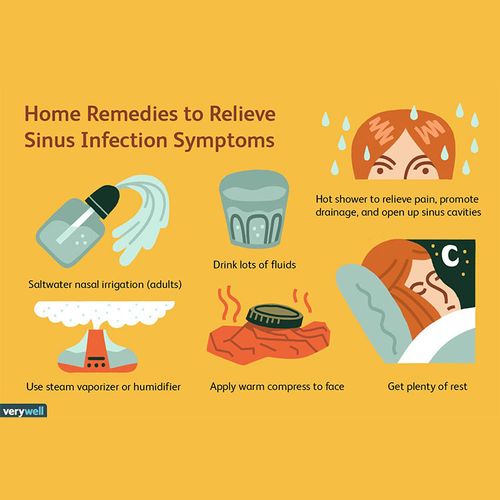Dry air is tough on sensitive mucous membranes, and closed windows and poor ventilation can lead to the buildup of noxious particles (including fumes from harsh cleaning products, paint, perfumes, etc.), the enemies of sinusitis and allergy sufferers.
Rob Ivker, DO, a family doctor for 35 years and past president of the American Holistic Medical Association, shares strategies to ease sinus suffering throughout the year.
Keep Air Clean And Moist
In every season, always have optimal air in your work and home, says Dr. Ivker. This means air that is clean (you can't see or smell it), moist (between 35% and 55% relative humidity), negative-ion-and oxygen-filled, and warm (between 65 and 75 degrees Fahrenheit).
- Radiant heat/baseboard heating systems are preferable to forced hot-air heating systems through ducts. Radiant heating keeps the hot dry air and dust particles from flying through the house.
- If you have a forced hot-air heating system, use an efficient furnace filter (such as Filtrete made by 3M and change it monthly or more often during the winter months.
- Have your home's air ducts cleaned every three years.
- Fill your home with high oxygen-producing and air filtering plants (such as spider plants, chrysanthemums, striped dracaena and Boston fems), which can remove toxins from the air and generate oxygen.
- Place a warm-mist humidifier in your bedroom to keep air moist and to prevent sinuses from becoming dry and irritated. In Dr. Ivker's opinion, two leading brands are Slant/ Fin (www.slantfin.com/consumer) and Bionaire (www.bionaire.com).
- Invest in a negative-ion generator. These devices efficiently clean air. Studies have shown that ionized air has improved the lung capacity of asthmatics, Ionizers that do not emit ozone are best (ozone is an irritant to the mucous membrane), says Dr. Ivker. He recommends the Sinus Survival Air Vitalizer (www.sinussurvival.com).
- Consider a HEPA (high-efficiency particulate arrestor) air cleaner. According to Dr. Ivker, these are also highly efficient in their ability to purify air. However, they have none of the other beneficial effects of negative ions.
- Avoid air pollutants, strong odors and fumes. Secondhand smoke is the single most harmful indoor air pollutant, warns Dr. Ivker. Others include radon, mold, dust, harsh cleaning products and air fresheners. Whenever possible keep chemical products out of your home, and instead use environment-friendly "green" cleaning products (baking soda, vinegar, borax, etc.), which are less irritating to the sinuses.
If allergies act as a trigger of your sinus problems, as they do with nearly half of all sinus sufferers, it's important to keep them under control. To make your environment sinus-friendly and inhospitable to allergies and sinusitis, Dr Iuker recommends…
- Identify your triggers—foods (most common trigger) and food additives, mold, dust mites, animal dander, chemicals, etc.—and reduce your exposure to them.
- Keep your home and workspace clean and dust-free.
- Stay on top of mold. For example, wash your humidifier's tank once a week with vinegar and water. Otherwise it becomes home to mold and bacteria that are recirculated through the air.
- Change pillow and mattress covers frequently, and wash bedding and clothing in hot water.
- Remove wall-to-wall carpeting and heavy drapes, and invest in a vacuum cleaner with a HEPA filter.
Are Fruits and Veggies Aggravating Your Allergies?
Does your mouth get itchy after you eat fresh fruits or vegetables? You may have oral allergy syndrome, say experts at the American Academy of Allergy, Asthma & Immunology (AAAAD. OAS, also called pollen-food syndrome, is caused by allergens such as ragweed, which begins to bloom in mid-August.
"In addition to sneezing and itchy. water eyes, and symptoms of OAS, ragweed allergies can take a heavy toll on the allergy sufferer's quality of life," said Dr. Suzanne S. Teuber, chair of the AAAAI'S Adverse Reactions to Foods Committee.
OAS symptoms are the result of a crossreactivity reaction" between allergy antibodies directed toward target pollen proteins with similar proteins found in other parts of plants. Common symptoms of OAS included an itchy mouth and throat with mild swelling immediately after eating fresh fruits or vegetables.
People with ragweed allergies can experience OAS symptoms when they consume bananas, cucumbers, melon, zucchini, sunflower seeds, chamomile tea or echinacea.
OAS can also occur in people with birch tree allergy symptoms when they eat peaches, apples, pears, cherries, carrots, hazelnuts, kiwis, and almonds, the AAAAI said.
Generally, cooking foods will eliminate an OAS reaction, according to the AAAAI.
